
by Meg S | May 14, 2025
Foreclosure prevention through mediation is one of the most effective and underused tools available to homeowners facing financial stress. At the Dispute Resolution Center of King County (KCDRC), mediation helps residents navigate tough conversations with lenders, resolve misunderstandings, and find alternatives before foreclosure becomes a reality.
This work is closely tied to the HOMES program—Homeowners’ Outreach, Mentoring, and Education Services—which helps older adults, veterans, and people with disabilities apply for King County’s property tax exemption. Together, these services provide meaningful support to residents at risk of housing instability.
What is Mediation?
Mediation is a voluntary, confidential process where a neutral third party helps people have structured conversations and work toward agreements. At KCDRC, our trained mediators don’t take sides or offer legal advice. Instead, they create space for understanding, problem-solving, and clarity during difficult moments.
In the context of housing, this can mean facilitating conversations between:
-
Homeowners and mortgage servicers
-
Family members navigating shared property decisions
-
Homeowners and county officials or financial counselors
How Mediation Helps Prevent Foreclosure
When homeowners fall behind on payments or struggle with taxes, communication often breaks down. Mediation brings everyone to the table and offers a chance to:
-
Clarify the situation
-
Identify options such as payment plans, tax relief, or temporary adjustments
-
Connect with support resources, including legal aid and financial counseling
-
Rebuild trust and reduce emotional strain
Mediation can be especially effective when paired with programs like HOMES (Homeowners’ Outreach, Mentoring, and Education Services), which helps eligible residents apply for King County’s property tax exemption. By addressing both the financial and relational sides of housing stress, residents are more likely to find long-term stability.
Real-Life Outcomes
While every situation is different, here are a few common outcomes of housing-related mediation at KCDRC:
-
Agreement on a new repayment timeline
-
Coordination of property tax exemption documentation
-
Family agreement on shared ownership or financial responsibilities
-
Referrals to housing counselors or attorneys when needed
How to Access Help
If you or someone you know is at risk of foreclosure or struggling with housing stress, reach out early. The sooner mediation begins; the more options are typically available.
You can:
You don’t have to face foreclosure alone. Mediation can be the first step toward clarity, stability, and peace of mind.
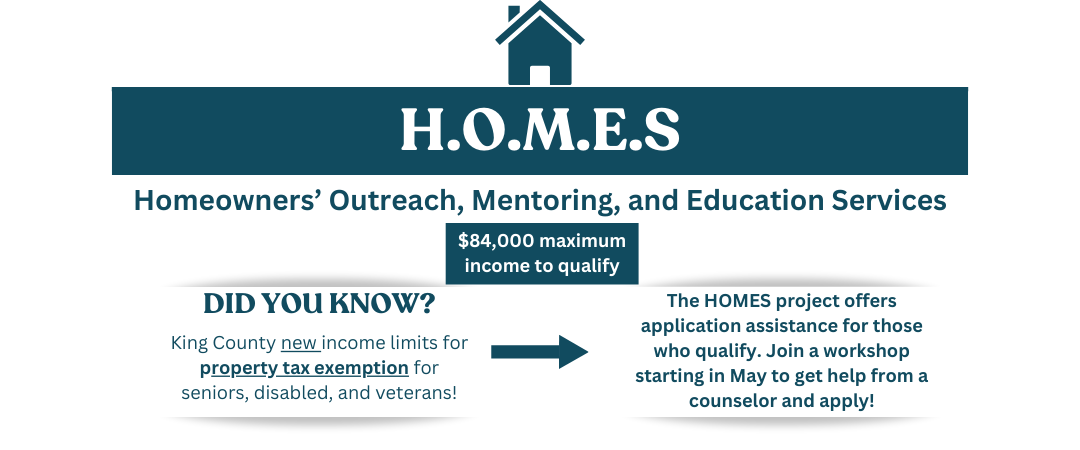
by Meg S | Mar 31, 2025
Starting in May 2025, a powerful new resource is available to help eligible residents apply for the property tax exemption King County offers. The HOMES program—short for Homeowners’ Outreach, Mentoring, and Education Services—supports older adults, veterans, and people with disabilities in completing their applications for this valuable benefit.
Thanks to a recent income limit increase to $84,000, more residents now qualify for the property tax exemption King County provides, helping ease the financial burden for those who need it most.
What Services Does HOMES Provide?
Application Assistance Workshops
Starting in May 2025, HOMES will host monthly in-person workshops on the third Saturday of each month. During these workshops, trained counselors will be available to help residents complete their property tax exemption applications.
Workshop Dates:
-
May 17
-
June 21
-
July 19
-
August 16
-
September 20
-
October 18
-
November 15
-
December 20
Eligibility Requirements:
What to Bring:
-
Previous year’s tax return
-
Disability verification letter
-
Proof of age/ID (WA driver’s license or similar)
-
Property ownership documents (such as a deed)
-
Records of out-of-pocket medical expenses (doctor’s letters, pharmacy records, bank statements, etc.)
Virtual Information Hub
Beginning in June, the King County Dispute Resolution Center (KCDRC) will host virtual Information Hub meetings. These sessions are open to all homeowners and provide access to a range of community resources focused on foreclosure prevention.
KCDRC is a trusted nonprofit offering mediation and conflict resolution services. Their mediators have helped many residents navigate housing challenges and avoid foreclosure through guided conversations and problem-solving.
How to Get Involved
Whether you’re a homeowner concerned about rising taxes or supporting a loved one through the application process, the HOMES program is here to guide you every step of the way.
Together, we can build stronger, more stable communities—one home at a time.

by Meg S | Feb 5, 2025
Renting a home or apartment can be a great experience, but disputes between tenants and landlords are not uncommon. Whether it’s over maintenance issues, security deposits, or lease agreements, disagreements can escalate quickly. Fortunately, mediation services offer a practical and cost-effective way to resolve these conflicts without unnecessary stress. If you’re a tenant or landlord facing a dispute, here’s why mediation might be the best option for you.
What Is Mediation?
Mediation is a voluntary process where a neutral third party helps both sides communicate and reach a mutually agreeable solution. Unlike formal proceedings, mediation is informal, confidential, and often much faster. The mediator doesn’t impose a decision but facilitates a conversation that allows both parties to express their concerns and work toward a fair outcome.
Benefits of Mediation for Tenants and Landlords
- Cost-Effective: Legal fees can be expensive, but mediation is usually much more affordable. Many community mediation centers even offer free or low-cost services.
- Faster Resolution: Court cases can take months, but mediation often resolves disputes within a few sessions.
- Confidential: Unlike public records, mediation discussions remain private, which can help preserve relationships and reputations.
- More Control: Instead of leaving the decision to someone else, both parties work together to find a solution that meets their needs.
- Improved Communication: Mediation fosters open dialogue, helping tenants and landlords better understand each other’s perspectives and potentially improving their relationship.
Common Rental Disputes Resolved Through Mediation
- Security deposit disagreements: Many tenants face challenges in getting their security deposits back, and landlords need to ensure damages are covered. Mediation can help find a fair resolution.
- Maintenance and repair issues: If repairs are not being addressed, mediation allows tenants and landlords to agree on a plan without unnecessary conflict.
- Lease misunderstandings: Differences in interpreting lease terms can lead to confusion. Mediation helps clarify responsibilities and expectations.
- Noise complaints: Disputes with neighbors can be tricky, but mediation encourages compromise and mutual respect.
- Eviction concerns: In cases where eviction is threatened, mediation may help tenants and landlords explore alternative solutions.
How to Prepare for Mediation
- Gather Relevant Information: Bring anything that supports a clearer picture, such as lease agreements, written communication, or maintenance requests.
- Identify Your Goals: Determine what outcome you hope to achieve from mediation. Be clear on your needs and open to discussion.
- Stay Open-Minded: The goal is to find a resolution that works for both parties, so be ready to listen and consider different solutions.
- Maintain a Respectful Approach: Approach the mediation process with a calm and constructive attitude. Positive communication increases the chances of success.
Next Steps
If you’re dealing with a rental dispute, mediation can be a helpful tool to resolve conflicts efficiently and amicably. By choosing mediation, tenants and landlords can save time and money while maintaining better relationships. Before taking further steps, consider reaching out to a local mediation service here —you may find a solution that works well for everyone involved.
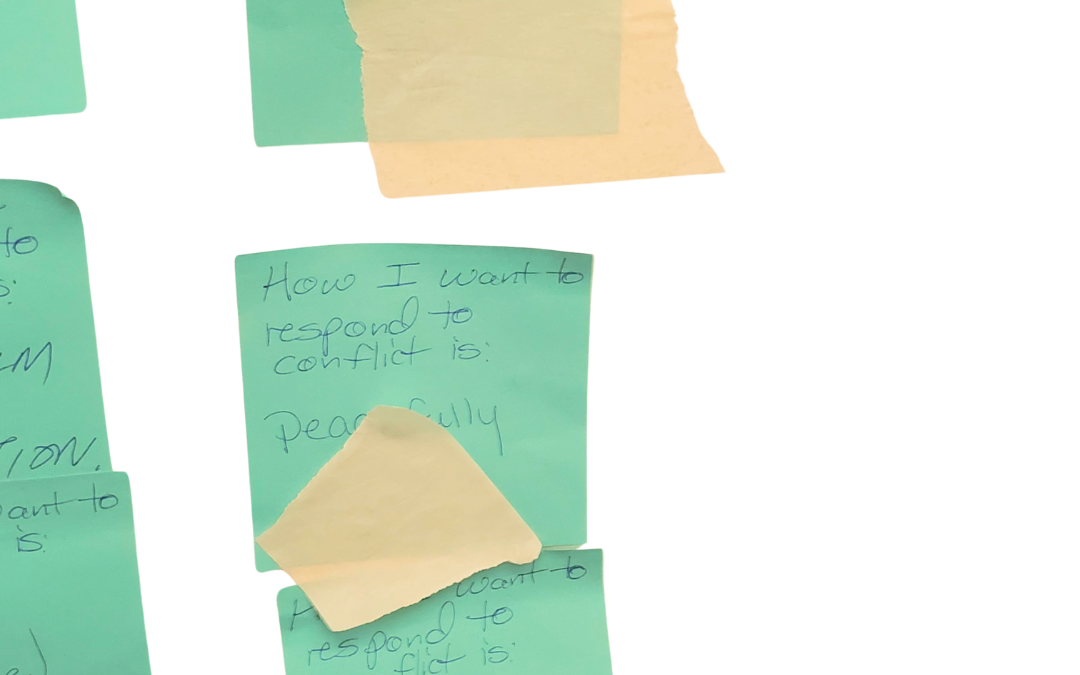
by Meg S | Nov 19, 2024
Peer Mediation Training
Our Youth Development team recently concluded a transformative peer mediation training for students at both Foster High School and Showalter Middle School, empowering them with essential conflict-resolution skills. Foster High’s training took place over a four-day, 12-hour program with around 20 students, including both new trainees and returning ninth graders who had previously participated in peer mediation at Showalter. Showalter Middle School also held a training session in September, where eight students engaged in foundational mediation skills.
The training sessions were led by KCDRC volunteers Sarah, Marilyn, and Sue, along with trainers Jazz and Vinh from King County ADR. Camilla, a dedicated peer mediator at Foster High, served as lead trainer, guiding students through mock mediations to develop their conflict-resolution abilities. The goal was to ensure students had practical experience, from preparing for a mediation to conducting a post-session debrief. Participants particularly honed their abilities to understand the mediation process, reframe statements, and reflect emotions—vital tools for creating an empathetic, understanding environment.
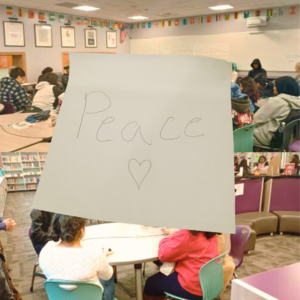
A Real-World Application
One of the program’s highlights was an unexpected real-world application. During a practice session at Foster High School, Miss LaJoy, the new peer mediation coordinator and attendance secretary, received an urgent request from the school’s principal: a live conflict required immediate mediation. Two student mediators eagerly volunteered, stepping out of the training to handle the situation. With coaching support from their trainer, Fergie, the students navigated an emotionally charged mediation session, helping those involved reach a constructive plan to move forward. Miss LaJoy praised the student mediators for their impressive work under pressure, underscoring the positive impact and real potential of peer mediation.
Looking Forward
Reflecting on the training experience, students expressed a desire to continue improving their mediation skills, especially in mastering open-ended questions to uncover deeper issues and promote understanding. To support this, KCDRC has planned ongoing sessions to strengthen students’ skills and reinforce their development as mediators. Peer mediation teams at both Foster and Showalter will participate in monthly follow-ups with KCDRC trainers, allowing for continuous growth and support. The success of the program has encouraged both Foster High and Showalter Middle School to integrate peer mediation as a core element of their school culture. The administration at both schools is enthusiastic about sustaining the program long-term and is exploring funding opportunities to ensure its continuation for years to come.
Engaging Youth Through Creativity
At Showalter Middle School, home of the Vikings, the KCDRC youth development program recently introduced a unique way to teach mediation skills—using bird puppets! Volunteer Sue shared her insights about these interactive training sessions, designed to make learning about conflict resolution engaging and memorable for students.
 The bird puppets, named “Memory” and “Thought,” served as both icebreakers and teaching tools. During opening circles, students passed the puppets around, using them to indicate whose turn it was to speak. This simple yet effective activity helped foster active listening and encouraged everyone to share their ideas. Sue introduced “Memory,” a raven inspired by Norse mythology, to teach students the importance of reflecting on past experiences and setting clear expectations in mediation. Drawing on the story of Odin’s two advising ravens, the activity helped students understand how mediators guide conversations to stay productive, avoiding the chaos of “opening a can of worms.”
The bird puppets, named “Memory” and “Thought,” served as both icebreakers and teaching tools. During opening circles, students passed the puppets around, using them to indicate whose turn it was to speak. This simple yet effective activity helped foster active listening and encouraged everyone to share their ideas. Sue introduced “Memory,” a raven inspired by Norse mythology, to teach students the importance of reflecting on past experiences and setting clear expectations in mediation. Drawing on the story of Odin’s two advising ravens, the activity helped students understand how mediators guide conversations to stay productive, avoiding the chaos of “opening a can of worms.”
Students practiced the mediator opening script in pairs, then acted out key concepts with gestures, making learning fun and interactive. Later, a baby eagle puppet helped illustrate how to explore personal experiences during mediation—examining the past, present, and future to resolve conflicts effectively. This creative approach not only engaged students but also connected them to the rich symbolism of their Viking mascot. A big thank you to Sue for her thoughtfulness and creativity in helping our youth develop essential life skills!
These articles were originally published in the KCDRC newsletter: sign up here.
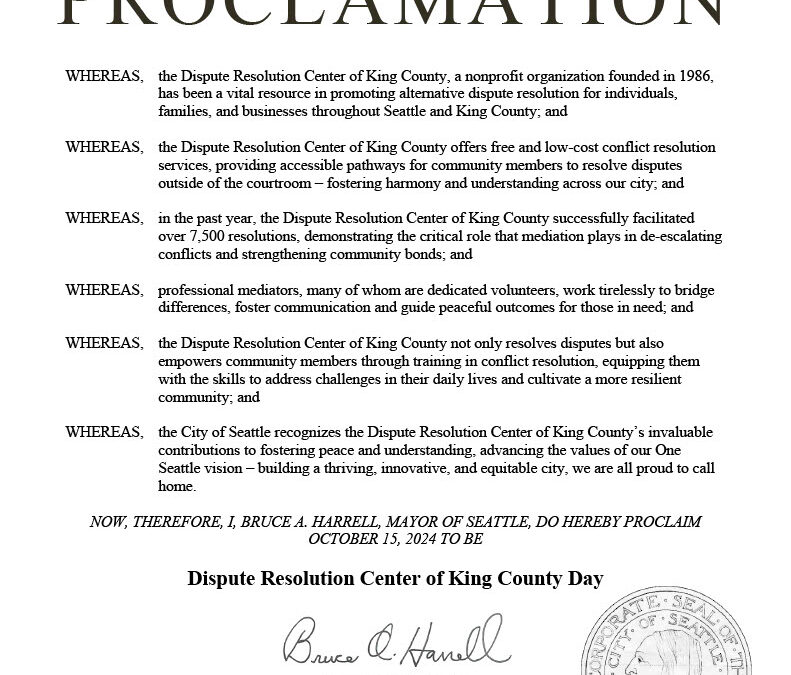
by Meg S | Oct 17, 2024
Conflict Resolution Month, celebrated each October, is a time to recognize the value of peaceful conflict resolution in communities across the United States. It originated from efforts in Colorado, where in 2007, the Colorado State Legislature passed a resolution designating October as Conflict Resolution Month. The initiative aimed to increase public awareness about mediation, negotiation, and other collaborative ways of resolving disputes.
The idea quickly gained momentum, with various organizations and states adopting similar measures to promote the importance of conflict resolution. The month-long celebration highlights the work of professionals in the field, such as mediators, arbitrators, and facilitators, who help individuals and communities settle disagreements without the need for adversarial proceedings.
Conflict Resolution Month encourages public engagement in constructive dialogues, offering workshops, panels, and events that teach effective communication and problem-solving skills. It aims to foster healthier relationships, reduce violence, and promote justice through understanding and collaboration.
Today, many cities, including Seattle, have embraced Conflict Resolution Month, often culminating in special proclamations, like the one issued for the Dispute Resolution Center of King County in 2024. The ongoing efforts ensure that conflict resolution remains a vital tool for building peaceful and resilient communities.
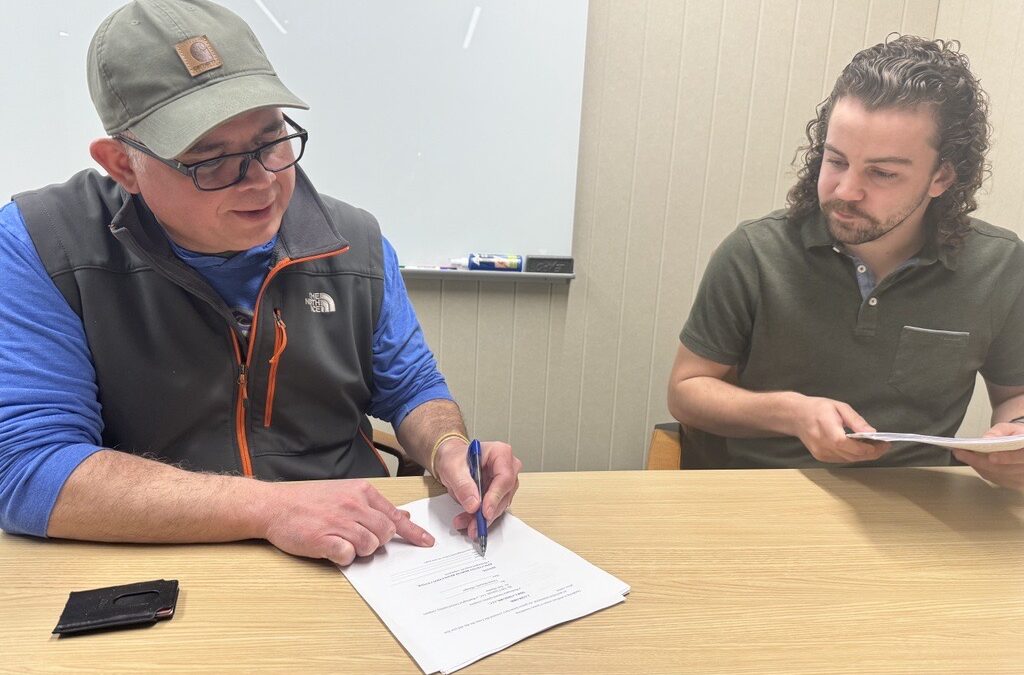
by Meg S | Sep 11, 2024
The Dispute Resolution Center of King County (KCDRC) is thrilled to announce our move to a new office space in the heart of downtown Seattle. This transition represents more than just a change of location; it’s an investment in accessibility, community connection, and our role in supporting the revitalization of the city.
For years, we had been searching for a new office space that could accommodate both our team and our vision. Our former location, as well as the fully remote office, became challenging in some ways. As our Executive Director, Dave Martine, shared, “We realized that our location was becoming a barrier to the community we serve. Moving to downtown offers a place that’s easier to access for everyone.”
After a thorough search, Seattle’s downtown became the clear choice. While there were initial concerns about parking and safety, Martine explained the shift in thinking: “We want to be where the people are. Being downtown means we are more centrally located, and it’s easier for both our team and the public to reach us.”
This move also aligns with KCDRC’s values of equity and accessibility. “It’s really about being accessible to everyone,” said Martine. “We’re a people business, and downtown Seattle opens doors to new opportunities for collaboration with other organizations and businesses that we couldn’t have imagined five years ago.”
In addition to accessibility, the new office presents exciting prospects for community engagement. “We want it to be a place used by the community, our volunteers, and staff,” Martine added. “Ideally, it could become more of a social hub—maybe we’ll even host events like ‘conflict coaching’ hours, where people can come to us instead of heading to the bar after dealing with a difficult coworker.”
KCDRC is also proud to contribute to the revitalization of downtown Seattle, a city still grappling with post-pandemic recovery. “When we first started looking, the occupancy rate downtown was around 37%, which has probably worsened,” Martine said. “But you still see people there—it’s not a dead zone. By establishing ourselves here, we’re not only placing a foothold in the community, but we’re also supporting the growth and vibrancy of the area.”
A special thanks goes out to the team who helped make this move possible, including our real estate agents, board members, and staff like Michelle, Caroline, Daniel, Ryan, Meg, and others. “We couldn’t have done it without them,” Martine shared. “This new chapter for KCDRC marks an exciting step forward, and we look forward to continuing our work in serving King County from the heart of Seattle.”
This article was initially posted in our newsletter: for more updates, sign up here.







 The bird puppets, named “Memory” and “Thought,” served as both icebreakers and teaching tools. During opening circles, students passed the puppets around, using them to indicate whose turn it was to speak. This simple yet effective activity helped foster active listening and encouraged everyone to share their ideas. Sue introduced “Memory,” a raven inspired by Norse mythology, to teach students the importance of reflecting on past experiences and setting clear expectations in mediation. Drawing on the story of Odin’s two advising ravens, the activity helped students understand how mediators guide conversations to stay productive, avoiding the chaos of “opening a can of worms.”
The bird puppets, named “Memory” and “Thought,” served as both icebreakers and teaching tools. During opening circles, students passed the puppets around, using them to indicate whose turn it was to speak. This simple yet effective activity helped foster active listening and encouraged everyone to share their ideas. Sue introduced “Memory,” a raven inspired by Norse mythology, to teach students the importance of reflecting on past experiences and setting clear expectations in mediation. Drawing on the story of Odin’s two advising ravens, the activity helped students understand how mediators guide conversations to stay productive, avoiding the chaos of “opening a can of worms.”
